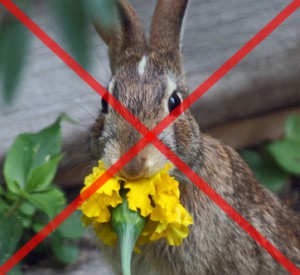Archive for uncategorized – Page 16
 Ok, they’re in the house, so how do we get them out? It depends on where they are and what they are. For now let’s presume they are rats or mice in the attic. The choice of weapons include rodenticides (poison), live and kill traps, sonic deterrent devices, fox urine (predator scents) and just let them be.
Ok, they’re in the house, so how do we get them out? It depends on where they are and what they are. For now let’s presume they are rats or mice in the attic. The choice of weapons include rodenticides (poison), live and kill traps, sonic deterrent devices, fox urine (predator scents) and just let them be.
Rodenticides (poison) work but they have unforeseen consequences. All rodenticides that non-licensed folks can buy work the same way. Poisons make them thirsty to drive them out of the structure to water and then they bleed to death. This happens about 90% of the time. The other 10% die in the house. Then you move into recovery and removal of the body. The critters that make it outside are easy prey for hawks, owls, coyotes, bobcats, domestic dogs and cats. The odds are good that these predators will not survive eating a poisoned critter. This is why I consider them a last resort.
I have heard mixed reviews on the sonic deterrents. We do sell both live and kill traps that work very well. If you go with a live trap and intend to set them free, you need a place to release what you trap. Don’t do it in an area that turns a critter into someone else’s problem. But if live traps are what you want then here is an important tip; cover the top and sides of the trap. The critter needs to see front to back not side to side. I do advise folks to use kill traps like snap traps and glue boards on rats and mice. Spring and live traps must be baited and this can be a trial and error learning curve. I know it sound cliché but cheese works well for rats and mice. Whatever you do, don’t just leave them alone. They bring with them insects (fleas mainly) and can cause major damage to your house and car.
For rats and mice as well as most mammals in the attic, the go-to product is a liquid predator scent. Fox or coyote urine are the predator scents that have the best track record right behind a firearm. You must know the point of entry of your visitor and what time of the day or night they are not there. Rats and mice are nocturnal. They will start moving about 8:00 pm and settle down around 6:00 am. You will need some predator scent and an applicator. Applicators consists of a cotton ball in a plastic bottle with four holes drilled in it. Pour enough fox urine in the bottle to cover the cotton ball. A good pair of dishwashing gloves is a sound investment. Place the charged applicators within ten feet of the entry hole. If you have to throw them it’s ok. Do not fix the hole until it has been two days with no sounds of activity.
 Training deer to eat from a deer feeder is as easy as 1-2-3!
Training deer to eat from a deer feeder is as easy as 1-2-3!
Deer and elk have unique nutritional needs at different times of the year, as a result there can be benefits to year-round supplemental feeding to help maintain optimal health. A successful supplemental feeding program is dependent upon on training deer to consume pellets from a feeder, something that does not come naturally to them.
Utilizing the three steps below will help deer transition smoothly onto a supplemental feeding program, helping to ensure the deer’s nutritional needs are met year-round.
- Choose a high quality deer feed
Select a feed that is formulated to match the unique needs of animals in your area; providing them a high quality diet year round can help maximize production and health. Look for feeds that are well researched and water-resistant, this will help reduce pellet waste and labor.
- Select a high quality deer feeder
Free-choice self-feeders protect pellets and provide them to deer whenever they want to eat. Because deer eat several times a day, professionally made free-choice feeders (or even trough feeders) can be the best way to feed deer for maximum intake and antler growth.
One free-choice feeder can comfortably feed 25 free-ranging deer if each consumes an average of 1.5 lbs of feed per day. Place your feeders along frequently used runways or trails and be sure to have enough so that deer do not have to travel more than ½ to ¾ of a mile to a feeder. A good rule of thumb is to provide one feeder per 300-400 acres. Never hunt in a feeding area.
For best results, make sure your feeder location provides:
- Easy approach into the wind
- Good visibility
- Access to water
- Easy escape routes near cover
- Good deer traffic
To help keep deer on low or unfenced property, place feeding areas near the center of your land and at least 500 yards from the perimeter, if possible. Do not place feeders along fence lines, roads, power lines or in large openings.
Spin feeders with corn can be a useful tool to attract deer to the area you would like to start feeding with free-choice feeders. Spin feeders toss out grain or pellets at timed intervals. It can be beneficial to mix at least 25% corn with the pellets to maintain good flow through the spin feeder.
Note that corn is extremely low in the nutrients necessary to grow big antlers. In addition, corn can founder and may kill deer if too much is consumed at one time. However, when safely used in moderation, it is ideal for drawing deer to an area and training them to eat pellets.
- Follow these steps to get deer eating from the feeder
Most deer are not used to seeing pellets, so they must be trained to recognize them as food and to eat them out of a feeder. It is best to start a supplemental feeding program when typical food sources (farm crops, natural vegetation, new food plots or even acorns) are no longer in abundance, such as during winter or drought conditions.
To set-up a feeder, select an area where deer traffic is good, and then follow these steps:
- Set up a spin feeder to throw out 1-2 pounds of corn every 6 hours, or spread it by hand using gloves or a scoop to limit human scent. This amount will attract them to the area you want to feed. Be sure to have at least one feeding in the middle of the night. Continue this until deer are consistently coming to the area to eat every day. This may take several weeks, depending on deer density, time of year and availability of other food sources.
- Once deer are consistently coming to the area daily looking for corn, set up a free-choice feeder filled with corn. Hand-toss corn on the ground around the feeder. When you observe deer consistently eating out of the free-choice feeder, stop hand-tossing corn.
- Once the deer have been eating corn out of the feeder for at least one week, change the self-feeder mixture to 1/3 pellets and 2/3 corn for another week so the deer can get accustomed to eating pellets. Make sure they clean up the pellets before replacing the mix. If they refuse to clean up the pellets, mix in more corn with the pellets.
- After deer are cleaning up the pellets, transition to a mixture of ½ pellets and ½ corn for one week. If the deer continue to sort out the corn and leave the pellets, continue to mix corn in gradually reducing the amount of corn until they have access to only pellets.
- When the deer are consistently cleaning up the mixture and don’t leave any pellets, put 25 to 50 pounds of just pellets in the free-choice feeder. NEVER fill a feeder full of pellets the first time regardless of its size – leave room to mix in a little corn in case the deer regress a bit and stop eating pellets. When they are consistently eating pellets from the self-feeder, you may fill it completely with pellets.
- Keep feeders clean. Remove old, wet or spoiled feed before refilling, as deer are very sensitive to odors, and damp or spoiled feed may prevent fresh feed from flowing down. Fresh feed will keep deer coming back.
For additional information on training deer or nutrition programs for deer or elk, contact your Purina Animal Nutrition representative. Regulations for the feeding of big game can vary from state to state. Please check with your local game and fish department for the proper usage of this product.
 Are you tired of rabbits and other wildlife munching on your landscaping? Try deterring the little creatures with fox urine. Fox urine will keep rabbits and most wildlife from eating your pansies and other tasty plants in your flowerbeds. Before you handle fox urine, make sure you have a good pair of dish washing gloves. To use fox urine in your flower beds, simply pour a small amount of urine into an applicator (a cotton ball in a plastic bottle with holes in it) until the cotton ball is soaked. With the cotton ball soaked, place the applicators about 10 to 15 feet apart. The smell of fox urine will last several hours to us humans but for the urban wildlife it will last about a month. Then, just refill the applicators as needed. We stock fox urine and applicators here at the store.
Are you tired of rabbits and other wildlife munching on your landscaping? Try deterring the little creatures with fox urine. Fox urine will keep rabbits and most wildlife from eating your pansies and other tasty plants in your flowerbeds. Before you handle fox urine, make sure you have a good pair of dish washing gloves. To use fox urine in your flower beds, simply pour a small amount of urine into an applicator (a cotton ball in a plastic bottle with holes in it) until the cotton ball is soaked. With the cotton ball soaked, place the applicators about 10 to 15 feet apart. The smell of fox urine will last several hours to us humans but for the urban wildlife it will last about a month. Then, just refill the applicators as needed. We stock fox urine and applicators here at the store.
Coupons
Wells Brothers Pet, Lawn & Garden Supply is pleased to offer monthly specials and coupons.
Click here for the coupons:wb-nov 2024
Upcoming Events
Copyright © 2024 All Rights Reserved





